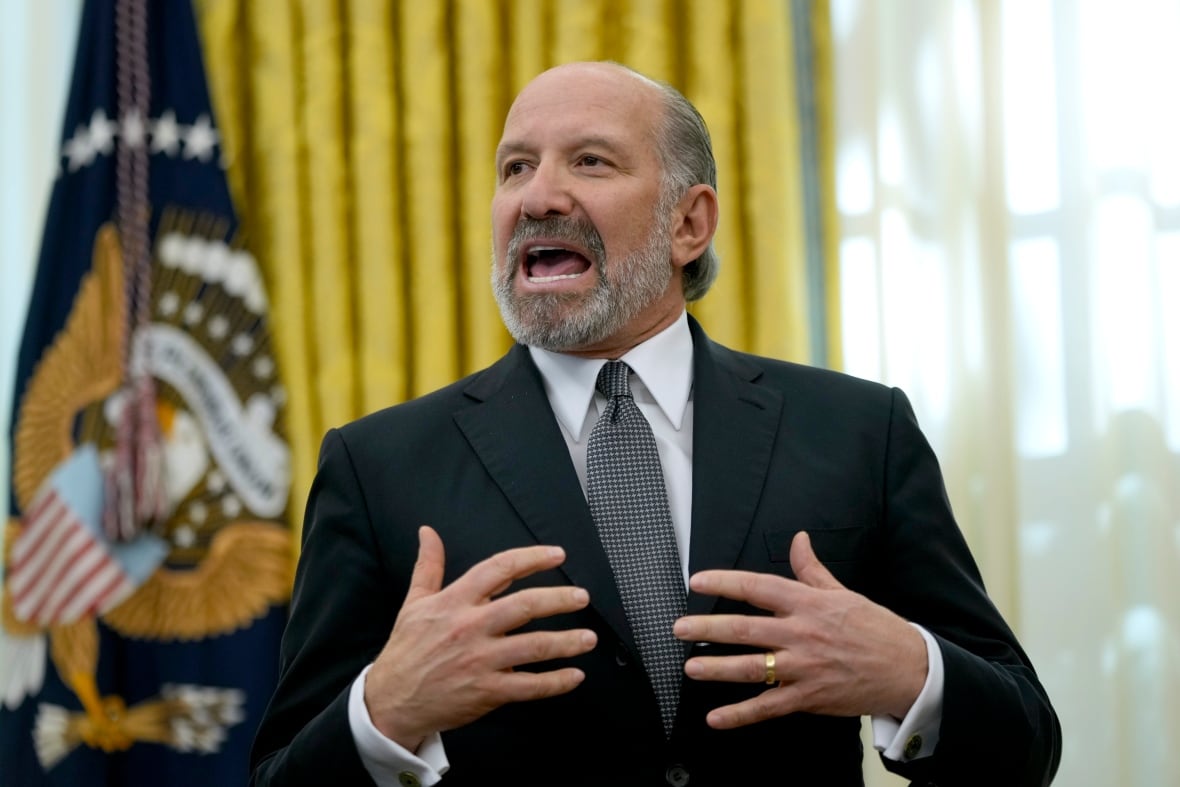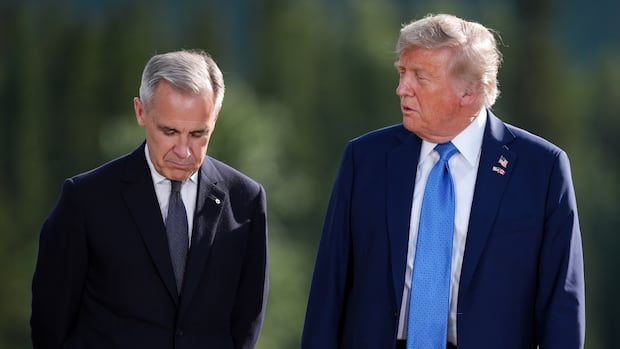Canadian exporters across a wide range of industries have a way to escape U.S. President Donald Trump’s blanket tariffs.
That escape hatch is compliance with the Canada-U.S.-Mexico Agreement (CUSMA), the three-way free trade deal signed by Trump back in 2018.
U.S. and Canadian officials have said the across-the-board tariffs Trump is threatening to impose on Aug. 1 won’t apply to goods that comply with the terms of CUSMA.
Trade policy experts say the vast majority of Canadian exports can qualify for this exemption, and that’s leading to a stampede of companies rushing to do the paperwork to get their products deemed compliant.
Here’s what you need to know about CUSMA compliance and how it could protect much of Canada’s cross-border trade from Trump’s tariffs.
What is the CUSMA exemption, and why does it matter?
Back in March, Trump imposed 25 per cent tariffs on Canadian exports to the U.S., except energy and potash, which were hit with a 10 per cent tariff. (That’s the blanket tariff he’s threatening to boost to 35 per cent if there’s no deal reached by Aug. 1.)
However, Trump quickly amended those tariffs, exempting products that qualify for duty-free status under CUSMA. That exemption — originally characterized as a one-month pause — remains in effect.
Around 86 per cent of the value of Canada’s exports to the U.S. have the potential to qualify for that exemption and cross the border without tariffs, according to an analysis by RBC Economics.
Prime Minister Mark Carney tried to temper expectations about a Canada-U.S. trade deal, telling reporters all of President Donald Trump’s trade agreements have included tariffs.
Wolfgang Alschner, the Hyman Soloway Chair in Business and Trade Law at the University of Ottawa, says this gives Canada “a huge comparative advantage” over the rest of the world, which faces broad-based tariffs on nearly all exports to the U.S.
“It’s a huge deal,” said Alschner in an interview. “It’s not perfect and it’s not good for some [sectors], but overall it’s the best deal for any country in the world that currently exists.”
Which Canadian exports are tariff-exempt through CUSMA?
Since the vast majority of products have the potential to qualify for the exemption, it’s actually quicker to list the products that don’t.
Products that contain predominantly non-North American content that are merely shipped on to the U.S. from Canada don’t qualify as CUSMA-compliant.
The exemption does not apply to products that face Trump’s sector-specific tariffs — namely the 50 per cent tariff on steel and aluminum and the 25 per cent tariff on non-U.S. content of automobile imports.

But beyond those sectors, anything that is grown in or extracted from Canadian soil, or built with Canadian labour can enter the U.S. market tariff-free under CUSMA.
Even U.S. Commerce Secretary Howard Lutnick agrees. On the CBS program Face the Nation, Lutnick dismissed as “silly” the interviewer’s suggestion that free trade with Canada is dead, and said 75 per cent of U.S. imports from Canada and Mexico cross the borders tariff-free.
What makes an export CUSMA-compliant?
In general terms, any product made in Canada has the potential to be considered CUSMA-compliant. However, the exporter has to jump through some hoops and deal with some paperwork to prove enough of the product actually comes from Canada to qualify.
This means meeting CUSMA’s rules of origin. The rules vary among products, but generally 60 to 75 per cent of a good must come from within North America to be tariff-free.
Laura Dawson, executive director of the Future Borders Coalition, an organization that advocates for smoother Canada-U.S. trade and travel, says it can be painstaking and time-consuming to show that a product meets those rules of origin, but it’s becoming the “new reality” for Canadian exporters.
“It’s something businesses are going to have to accept, that if they want to do business with the United States, they’re going to have to prove compliance,” Dawson said in an interview.
How do you prove an export complies with CUSMA?
Proving compliance involves obtaining what’s called a certificate of origin to smooth the product’s tariff-free journey across the border.
Steve Bozicevic, chief executive officer of A & A Customs Brokers, says his company’s work in providing those certificates has exploded in recent months.
“Getting the certification is relatively easy,” Bozicevic said in an interview. “Proving it if you get audited, if you are buying things from overseas and processing them, can get a little bit hairier.”
Official trade statistics show evidence more companies are doing this paperwork: the proportion of Canadian goods entering the U.S. explicitly duty-free neared 90 per cent in March and April, a jump from just below 80 per cent in the first two months of the year.
How does the CUSMA exemption play into trade talks?
All the indications from the Trump White House suggest that some level of tariffs are inevitable on at least some Canadian exports.
That makes maximizing the proportion of Canadian exports that avoid tariffs a key mission for Canada’s trade negotiators.
The CUSMA exemption provides a path to achieve that, and the three-way trade deal is scheduled for renegotiation in July 2026.
But of course, just as easily as he granted the exemption back in March, Trump could pull the plug on it at any time.
“If that exemption goes away, we’re in an Armageddon scenario,” said Bozicevic.







